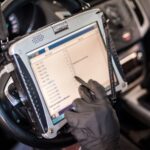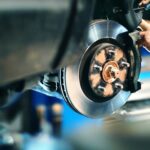 Repair Cracks in Leather Car Seats
Repair Cracks in Leather Car Seats
As a seasoned car enthusiast, I understand the frustration that comes with discovering cracks in your beloved leather car seats. But fear not, because in this article, I’ll share my expert tips on how to effectively repair those unsightly cracks and restore your seats to their former glory. With a few simple steps and the right tools, you’ll be able to tackle this common issue head-on and enjoy a smooth, seamless ride once again.
Leather car seats are not only luxurious but also prone to wear and tear over time. If you’ve noticed cracks appearing on the surface, it’s important to address them promptly to prevent further damage. In this comprehensive guide, I’ll walk you through the step-by-step process of repairing cracks in your leather car seats. From assessing the severity of the cracks to choosing the right repair method, you’ll gain valuable insights into how to effectively restore your seats and extend their lifespan.
Assessing the Leather Seats
Inspecting for Cracks
When it comes to repairing cracks in leather car seats, the first step is to thoroughly inspect and assess the damage. By doing so, you can determine the severity of the cracks and find the best approach to fix them. Here’s what I recommend when inspecting for cracks:
- Check the Entire Surface: Begin by carefully examining the entire surface of the leather seats. Look for any visible cracks or lines that may have formed. Sometimes, cracks can be small and hard to spot, so make sure to inspect every inch of the seat.
- Feel for Texture Changes: Run your hand gently over the leather to feel for any changes in texture. Cracked leather often feels rough or raised in certain areas. Pay close attention to places where the leather tends to stretch, such as the seat edges and corners.
- Look for Discoloration: Cracks in leather can sometimes cause the color to fade or change. Keep an eye out for any discoloration or variations in shade that may indicate the presence of cracks. These subtle signs are important to note, as they can help you address the issue before it worsens.

Identifying Leather Type
Knowing the type of leather used in your car seats is crucial before proceeding with a repair. Different leather types require specific repair methods and products. Follow these steps to identify the type of leather:
- Check the Manufacturer’s Manual: Start by referring to your car’s manufacturer’s manual. It often provides information about the material used for the seats. Look for any mention of genuine leather, synthetic leather, or specific leather types like Nappa, Nubuck, or Full-grain leather.
- Examine the Texture: Texture can be a good indicator of the type of leather. Genuine leather usually has a soft and natural feel, while synthetic leather tends to have a more uniform and artificial texture. Take note of any embossing or patterns on the leather, which can help in identification.
- Look for Labels or Tags: Many car manufacturers label the seats with information about the leather type. Check for labels or tags under the seats or on the side panels. These labels often provide details about the type of leather used, allowing you to proceed with an appropriate repair method.
Preparing for Repair
In this article, I have provided expert tips on how to effectively repair cracks in leather car seats. I have emphasized the importance of addressing these cracks promptly to prevent further damage. By following the step-by-step guide I have provided, you can assess the severity of the cracks and choose the appropriate repair method.
Repairing cracks in leather car seats is not as difficult as it may seem, and I have shared tried-and-true methods for fixing both minor and significant damage. The goal is to restore the seats and maintain their pristine condition for years to come.
To begin the repair process, it is crucial to thoroughly inspect and assess the damage by checking the entire surface, feeling for texture changes, and looking for any discoloration. Additionally, it is important to identify the type of leather used in your car seats before proceeding with a repair. This can be done by checking the manufacturer’s manual, examining the texture, and looking for any labels or tags.

 Repair Cracks in Leather Car Seats
Repair Cracks in Leather Car Seats




































